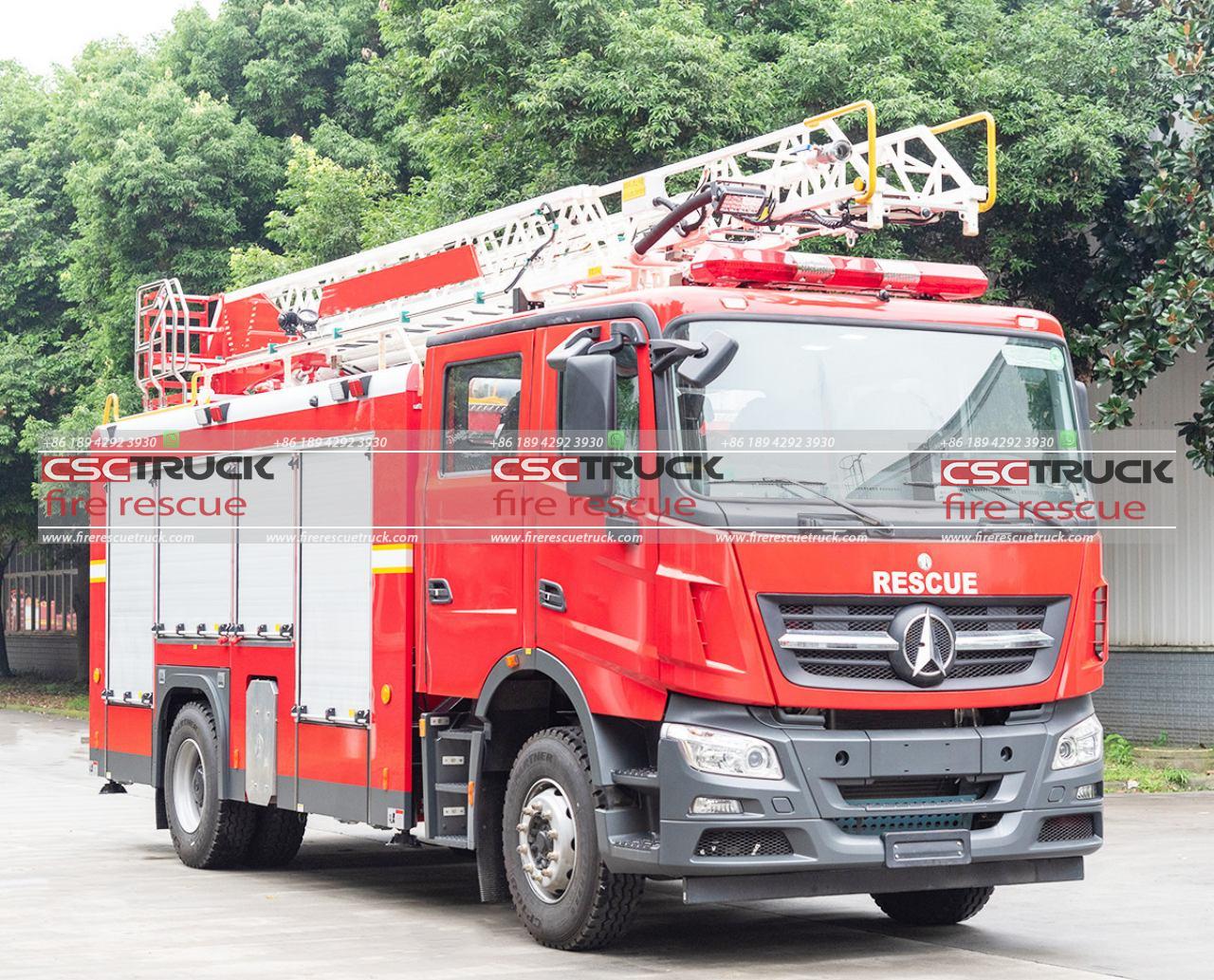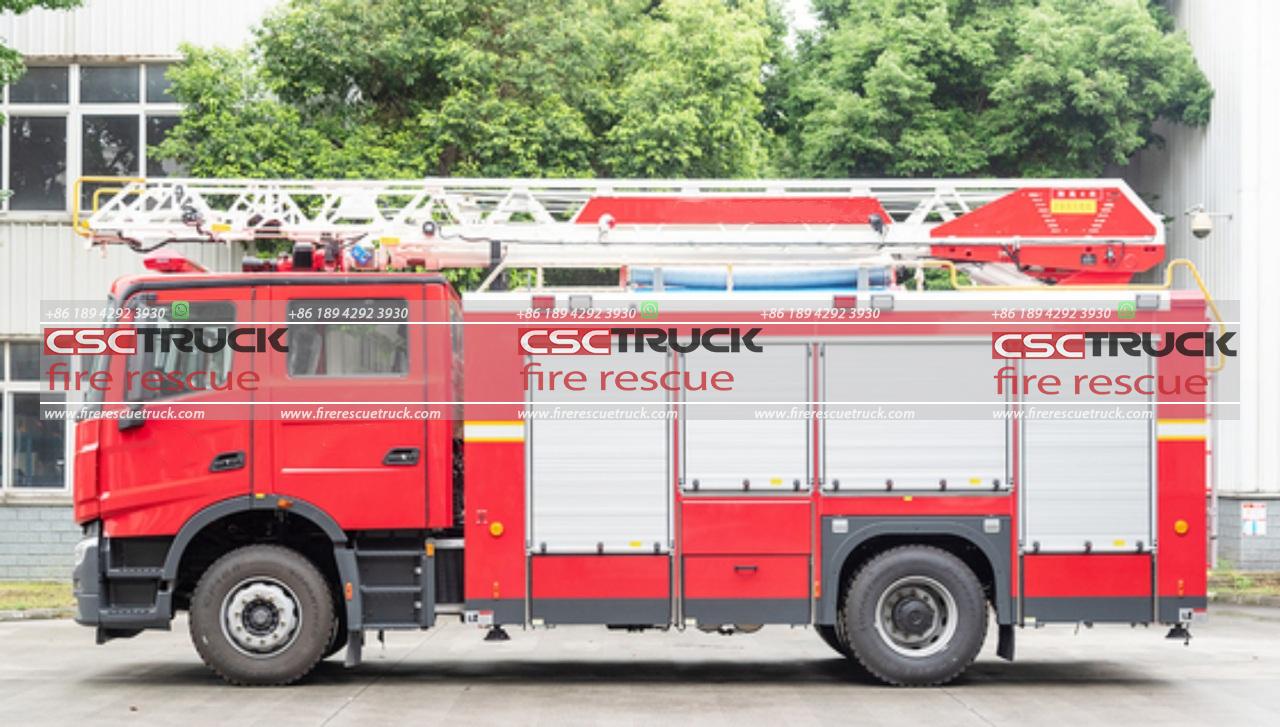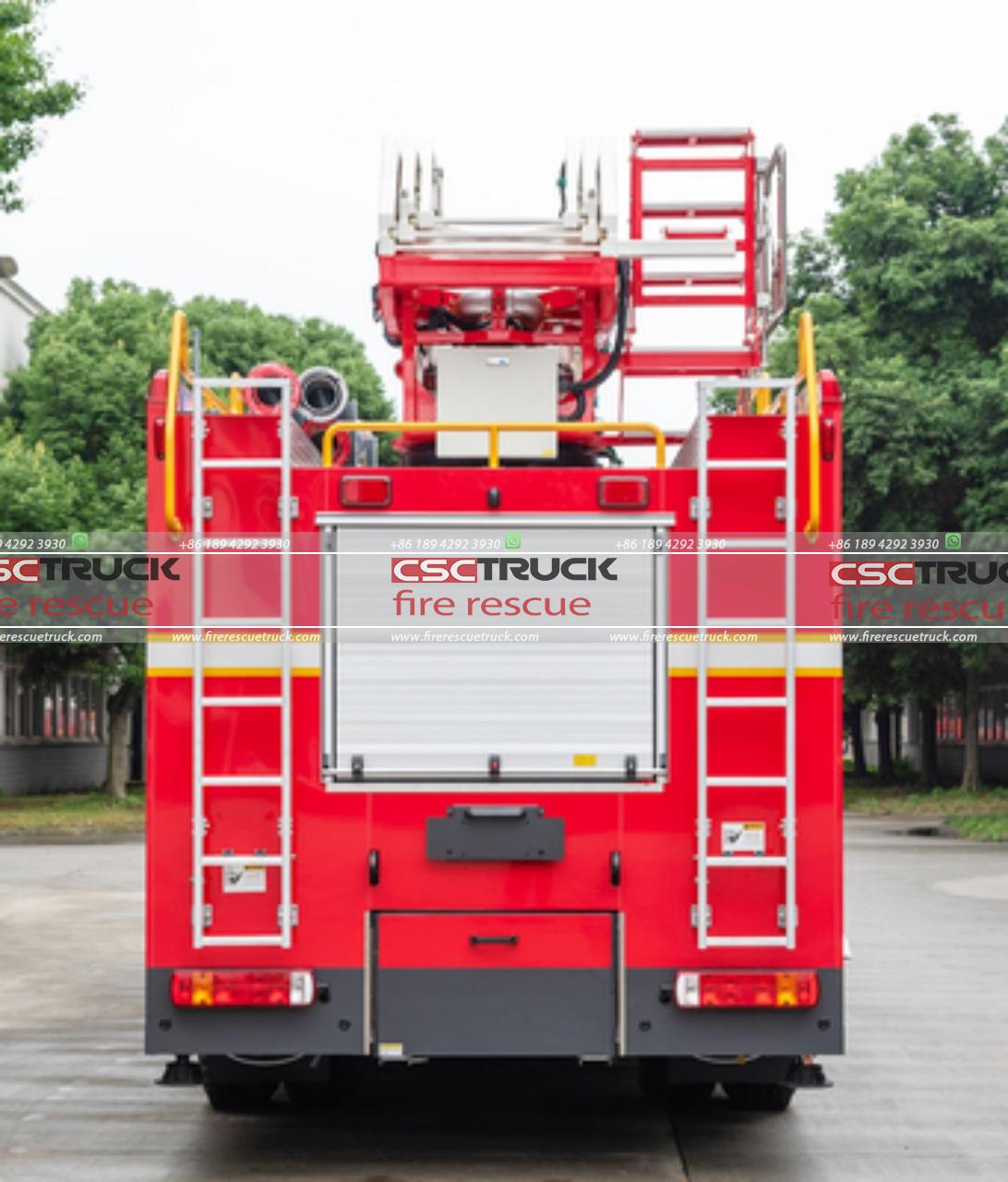What is the Difference Between a Fire Truck and a Ladder Truck?
Fire and ladder trucks are essential tools in firefighting and rescue operations, each with specific roles and capabilities tailored to different aspects of emergency response. Although they often work together on the scene, understanding the differences between them clarifies the unique functions they serve, their equipment, and the training required to operate them. In this article, we’ll explore the core distinctions between fire trucks and ladder trucks, highlighting their features, equipment, and roles within firefighting operations.
1. Fire Trucks: A Multifunctional Workhorse
A fire truck is a broad term that refers to any firefighting vehicle equipped with various tools, hoses, pumps, and equipment to support firefighters in various emergencies. Fire trucks have multiple types and configurations based on regional needs, terrain, and specific operational demands. They are designed to provide water, suppress fires, and carry equipment to perform rescue and extrication tasks.
Key Features of a Fire Truck
– Water Pump and Tank: Fire trucks often have a powerful water pump and a water tank. This pump, typically capable of high gallons-per-minute (GPM) output, connects to the hoses firefighters use to extinguish fires. The truck’s water tank varies in capacity, generally carrying between 500 and 1,500 gallons of water, depending on the truck’s type and design.
– Hose Compartments: Fire trucks are equipped with multiple hoses, varying in length and diameter, that firefighters deploy to access and control fires. Hose lines, such as supply lines and attack lines, play crucial roles depending on fire size and intensity.
– Ground Ladders: While ladder trucks have specialized aerial ladders, fire trucks carry ground ladders of different sizes to provide access to low-rise buildings and to perform quick rescues. These ladders are often portable and can be easily maneuvered by firefighters.
– Fire Suppression Equipment: In addition to hoses and pumps, fire trucks carry fire extinguishers, chemical agents, and tools like axes and crowbars to control flames and facilitate access.
– Emergency Medical Equipment: Fire trucks are often equipped with medical supplies to provide initial care. Firefighters are frequently trained as EMTs, allowing them to stabilize injured or affected people on the scene.
Fire Truck Types
The term “fire truck” includes several specialized vehicles, such as:
– Pumper Trucks (also known as engine companies): These are the most common fire trucks and are designed for direct firefighting, with powerful water pumps and hose connections.
– Rescue Trucks: Equipped for extrication and rescue, they carry tools like hydraulic cutters and spreaders (often known as the “Jaws of Life”), enabling firefighters to free people from entrapment in vehicles or buildings.
– Tanker Trucks: Tankers carry larger water supplies (often more than 1,500 gallons) to areas without access to fire hydrants, supplying additional water to pumper trucks on the scene.

2. Ladder Trucks: Specialized for Height and Access
A ladder truck is a more specialized type of firefighting vehicle primarily focused on reaching elevated areas. As part of a “truck company” (which typically includes a ladder truck and its crew), ladder trucks are equipped with long, extendable ladders, aerial devices, and additional equipment that allow firefighters to reach high-rise buildings, rescue people from heights, and provide elevated hose streams for firefighting.
Key Features of a Ladder Truck
– Aerial Ladder: The defining feature of a ladder truck is its telescoping aerial ladder, which can extend up to 100 feet or more. The ladder is often controlled from a separate control station and can rotate to reach buildings from various angles.
– Ladder Platform: Some ladder trucks, called “tower ladders” or “platform trucks,” are equipped with a bucket or platform at the end of the ladder. This platform allows firefighters to work from an elevated position more safely and with greater stability.
– Stabilizers or Outriggers: Ladder trucks are equipped with outriggers, which are stabilizing arms that extend outward from the truck to prevent tipping. These outriggers ensure the truck remains balanced and safe when the aerial ladder is extended.
– Water Pipes and Nozzles: Many ladder trucks have a pre-piped water system that runs up the ladder, allowing firefighters to deploy water streams from an elevated position. This can be critical in combating fires in upper levels of buildings or areas difficult to reach from the ground.
– Ventilation Equipment: Ladder trucks carry tools such as chainsaws, ventilation fans, and cutting tools, which allow firefighters to clear smoke and dangerous gases from a building. Ventilation is crucial in preventing backdrafts and flashovers, which are sudden, dangerous fire phenomena.
Ladder Truck Types
There are several types of ladder trucks, including:
– Straight Ladder Trucks: These trucks have an extendable aerial ladder without a platform, providing a simple yet effective way to reach heights.
– Tower Ladder Trucks: Equipped with a platform or bucket, these trucks provide a safe standing area for firefighters, making them suitable for prolonged operations at high elevations.
– Quints: A combination vehicle, “quints” combine features of both ladder and pumper trucks. They carry water, hoses, an aerial ladder, and other firefighting equipment, allowing them to perform multiple roles on the scene.
3. Differences in Function and Crew Roles
One of the main distinctions between fire trucks and ladder trucks lies in their operational roles and the specialized training their crews receive.
Fire Truck Roles
Fire truck crews, often known as engine companies, are tasked with fire suppression, search and rescue, and primary medical response. Their goal is to quickly deploy water to the fire source, perform rescues, and control flames as efficiently as possible. Fire truck crews typically respond first to a fire, positioning their vehicle to establish a water supply and begin extinguishing the flames.
Ladder Truck Roles
Ladder truck crews, or truck companies, focus on ventilation, access, and elevated rescues. They might also perform searches, but their priority is to provide aerial access and ventilation support. Ladder truck crews often enter the structure to open windows, cut holes in roofs for smoke release, and rescue people from upper floors. The ladder truck’s unique capabilities allow it to be positioned away from the fire while still delivering powerful elevated water streams and rescue access.

4. Complementary Use on the Fireground
On the ground (the area where fire response takes place), fire trucks and ladder trucks work together to maximize safety and efficiency. Fire trucks are responsible for initiating firefighting efforts by deploying water and performing initial rescues. Ladder trucks complement this by providing critical access, rescuing trapped individuals from heights, and ensuring proper ventilation. Together, they offer a well-rounded response, tackling multiple challenges that fire presents, especially in multi-story buildings.
5. Training and Specialization
Firefighters assigned to fire trucks typically receive in-depth training in fire suppression, water pumping, hose handling, and basic medical care. Meanwhile, those on ladder trucks undergo specialized training in ladder operations, ventilation techniques, and elevated rescues. The use of large aerial ladders requires advanced skills in navigation, balance, and teamwork to ensure safety and efficacy during high-angle rescues or complex building entries.

Conclusion
While the terms “fire truck” and “ladder truck” are sometimes used interchangeably, they refer to vehicles with distinct purposes and capabilities in firefighting operations. Fire trucks, with their water pumps, hoses, and rescue equipment, focus primarily on fire suppression and ground-level rescues. Ladder trucks, with their extended aerial ladders and platforms, are essential for accessing elevated areas and performing rescues from heights. Working together, these trucks form the backbone of fire response, ensuring that firefighters can address a wide range of emergency scenarios effectively and safely. Understanding the difference between these 2 vehicles underscores the diversity and adaptability within modern firefighting practices, emphasizing how specialized tools and training allow for comprehensive emergency response.







